Bachelor of Medicine, Bachelor of Surgery, or in Latin: Medicinae Baccalaureus Baccalaureus Chirurgiae, are the two first professional degrees in medicine and surgery awarded upon graduation from medical school by universities in countries that follow the tradition of the United Kingdom (UK). The historical degree nomenclature suggests that they are two separate undergraduate degrees; however, in practice, they are usually treated as one and conferred together, and may also be awarded at graduate-level medical schools. In countries that follow the system in the United States, the equivalent medical degree is awarded as Doctor of Medicine (MD) or Doctor of Osteopathic Medicine (DO).

Edward Headlam Greenhow FRS, FRCP was an English physician, epidemiologist, sanitarian, statistician, clinician and lecturer.
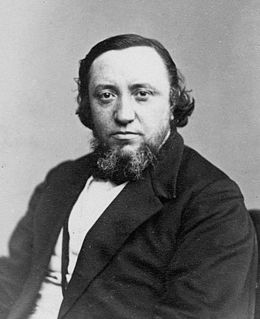
Sir Benjamin Ward Richardson was an eminent British physician, anaesthetist, physiologist, sanitarian, and a prolific writer on medical history. He was the recipient of the Fothergill gold medal, awarded by the Medical Society of London in 1854 and of the Astley Cooper triennial prize for an essay in physiology.
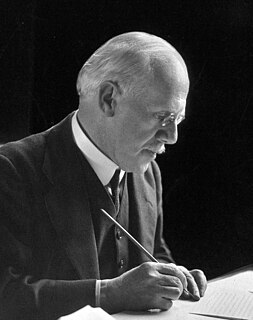
Sir George Newman GBE, KCB FRSE was an English public health physician, Quaker, the first Chief Medical Officer to the Ministry of Health in England, and wrote a seminal treatise on the social problems causing infant mortality.

Sir Henry Wentworth Dyke Acland, 1st Baronet, was an English physician and educator.

Sir John Simon was an English pathologist, surgeon and public health officer. He was the first Chief Medical Officer for Her Majesty's Government from 1855–1876.
Cecil Purser was an Australian physician and served terms as chairman of Royal Prince Alfred Hospital and vice-chancellor and deputy chancellor of the University of Sydney.
William Henry Corfield was an English hygienist. Appointed Professor of Hygiene and Public Health at University College London in 1869., Corfield revolutionised hygiene and household sanitation in Victorian England.

Balthazar Walter Foster, 1st Baron Ilkeston PC FRCP was a British physician and politician.
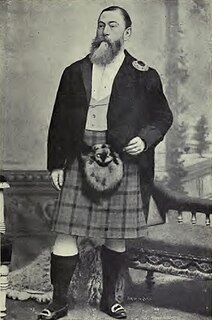
Sir Charles Alexander Cameron, CB was an Irish physician, chemist and writer prominent in the adoption of medical hygiene. For over fifty years he had charge of the Public Health Department of Dublin Corporation.
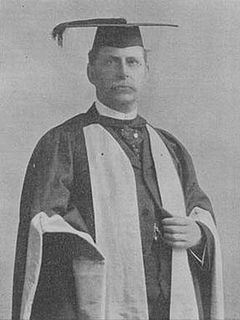
Henry Radcliffe Crocker, MD, FRCP was an English dermatologist. Originally from Hove in Sussex, Crocker started his working life as an apprentice to a general practitioner, before going to London to attend the University College Hospital medical school. Working as a resident medical officer with William Tilbury Fox, Crocker began a lifelong career in dermatology. With his 1888 book Diseases of the Skin: their Description, Pathology, Diagnosis and Treatment, he became known as a leading figure of dermatology.

Sir William Tindal Robertson, was an English physician. He represented Brighton in Parliament from 29 November 1886 – 25 October 1889.

John Syer Bristowe (1827–1895) was an English physician.

Sir Arthur Newsholme was a leading British public health expert during the Victorian era.
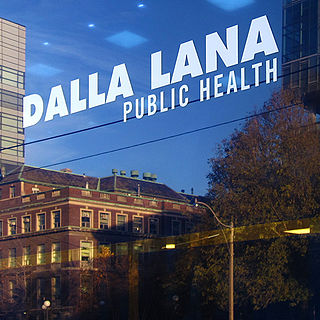
Dalla Lana School of Public Health is the school of public health at the University of Toronto. It was founded in 1927, and was home for 50 years to Connaught Laboratories, a manufacturer of vaccines, insulin, and many other pharmaceutical products. Having grown to be the largest cluster of public health scholars in Canada, the school was revitalized in 2008 with the support of a major gift from the Dalla Lana family.
Charles Meymott Tidy (1843–1892) was an English medical man and sanitary chemist, a barrister who wrote also on legal matters.
Hugh Kingsley Ward MC was an Australian bacteriologist. He was Bosch Professor of Bacteriology at the University of Sydney from 1935 to 1952. He was an Australian national champion rower who competed for Australasia at the 1912 Summer Olympics.
Sir James Kingston Fowler, KCMG, KCVO, FRCP was a British physician, noted for his work at Middlesex Hospital and as an expert in diseases of the lungs.
Dr John Smith Purdy FRSE DSO MID (1872–1936) was an early 20th-century Scots-born physician and military physician who came to fame in Tasmania and Australia.
Sir William Robert Smith FRSE DL JP (1850–1932) was a 19th/20th century British forensic scientist, public health expert and also a local politician. He was founder of the Public Health Medical Society which was later renamed the Royal Institute of Public Health.














